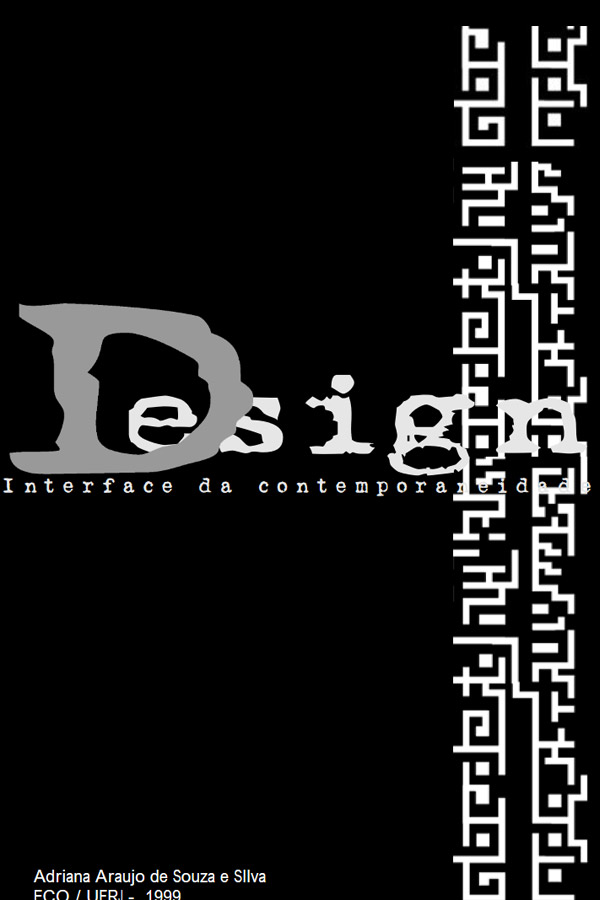M.A.

Design: Interface da Contemporaneidade (Design: Interface of contemporary times)
Communication and Image Technology, Department of Communication, Federal University of Rio de Janeiro, Brazil (1999).
This thesis analyzes graphic design as an interface of contemporary times, that is, as a (printed / on screen) representation of today’s society. I argue that the shift from functional to contemporary (deconstructed) design is a consequence of the development and use of new digital technologies in the process of organizing information on a page/screen. I define the term “interface” in two different but overlapping ways. First, interfaces are defined as the material information supports on which people produce design, i.e., organize information in space. I develop this idea via a historical analysis of graphic design, including the history of typography, which is the basis of our visual communication processes. Second, I analyze the computational antecedents of the term interface. I emphasize how different interfaces (material information supports) organize information in new ways and, consequently, influence the way we think and how we represent our world. Finally, I focus on deconstructionism as a characteristic of the contemporary graphic interface. Deconstruction is analyzed both in graphic design and on the world wide web. [Defense slides].